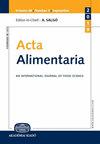白腐菌Calocybe indica:令人难以置信的木质纤维素分解酶工厂及其在蘑菇栽培中的潜在应用
IF 1
4区 农林科学
Q4 FOOD SCIENCE & TECHNOLOGY
引用次数: 1
摘要
在木质纤维素废料上种植特种蘑菇是最经济的有机回收工艺之一。与其他栽培蘑菇相比,人们对食用菌印度洋囊菌产生的木质纤维素水解酶的性质及其在浸没和固态发酵过程中的酶活性分布知之甚少。在培养的第14天和第21天,漆酶(7.67 U mg−1)、锰过氧化物酶(7.48 U mg−2)、纤维二水解酶(5.46 U mg−3)和内切木聚糖酶(4.21 U mg−4)的细胞内活性在印度C.indica中获得最佳。漆酶(11.57 U mL−1)、木质素过氧化物酶(8.45 U mL−2)和内木聚糖酶(6.22 U mL−3)的胞外活性在第14天最高。木质素水解酶活性在底物定植过程中是显著的,但在子实体发育过程中迅速下降。另一方面,C.indica在底物定殖过程中表现出相对适中的水解酶活性。原基形成时水解酶活性显著增加,成熟子实体期达到高峰。经粗酶处理的小麦秸秆用于蘑菇生产的产量为52.47%。这些发现表明,木质纤维素分解酶的活性与籼稻的生长发育阶段一致。本文章由计算机程序翻译,如有差异,请以英文原文为准。
White rot fungus Calocybe indica: Incredulous factory of lignocellulolytic enzymes and their potential applicability for mushroom cultivation
Cultivation of specialty mushrooms on lignocellulosic wastes represents one of the most economical organic recycling processes. Compared with other cultivated mushrooms, very little is known about the nature of the lignocellulolytic enzymes produced by the edible fungus Calocybe indica, its enzymatic activity profiles during submerged and solid state fermentation. The intracellular activity of laccase (7.67 U mg−1), manganese peroxidase (7.48 U mg−1), cellobiohydrolase (5.46 U mg−1), and endoxylanase (4.21 U mg−1) was best obtained in C. indica on 14th and 21st day of incubation. The extracellular activity of laccase (11.57 U mL−1), lignin peroxidase (8.45 U mL−1), and endoxylanases (6.22 U mL−1) were found to be highest on the 14th day. Ligninolytic enzyme activity was substantial during substrate colonisation but quickly dropped during fruiting body development. C. indica, on the other hand, showed relatively modest hydrolase activity during substrate colonisation. The activity of hydrolytic enzymes increased dramatically when primordia formed and peaked at the mature fruiting body stage. The yield of the crude enzyme-treated wheat straw utilised for mushroom production was 52.47%. These findings showed that the activities of lignocellulolytic enzymes were regulated in line with developmental phase of growth of C. indica.
求助全文
通过发布文献求助,成功后即可免费获取论文全文。
去求助
来源期刊

Acta Alimentaria
农林科学-食品科技
CiteScore
1.80
自引率
0.00%
发文量
47
审稿时长
18-36 weeks
期刊介绍:
Acta Alimentaria publishes original papers and reviews on food science (physics, physical chemistry, chemistry, analysis, biology, microbiology, enzymology, engineering, instrumentation, automation and economics of foods, food production and food technology, food quality, post-harvest treatments, food safety and nutrition).
 求助内容:
求助内容: 应助结果提醒方式:
应助结果提醒方式:


